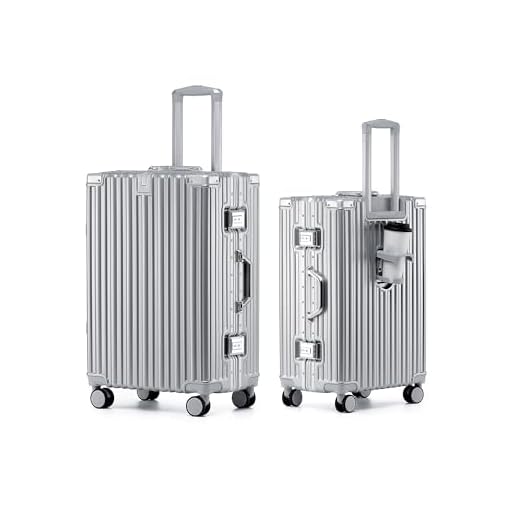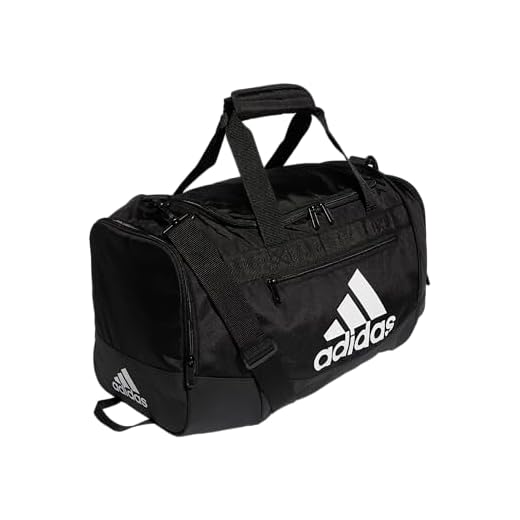



The option to move your gear using intercity coach services exists, offering convenience for both personal and commercial purposes. While each carrier has its own policies, these buses typically permit checked items, provided they meet specific size and weight requirements.
Ensure to confirm the dimensional limits set by the carrier. Most services allow standard sizes; oversized or heavy items may incur additional fees or restrictions. It’s advisable to pack valuables separately and use protective coverings for fragile possessions.
Before the trip, check the reservation process for baggage. Certain operators may require advance notice or the purchase of a special ticket for transporting items. Arrive early to handle any necessary paperwork and to streamline the loading process.
Lastly, familiarize yourself with pickup and drop-off protocols to ensure smooth handling of belongings. Keeping the receipt or tracking number handy will facilitate any inquiries during transit. Consider local regulations regarding the contents of your shipment, as restrictions may apply.
Shipping Possessions via Greyhound
For travelers seeking to dispatch their belongings, utilizing the services of Greyhound is a viable option. Packages can be shipped as freight, which is distinct from standard passenger transport. Ensure that items are securely packed, adhering to the transport regulations stipulated by the company.
Maximum weight for each parcel is typically 100 pounds, with size restrictions not exceeding 30 inches in width and 62 inches in combined dimensions (length + width + height). Check the latest guidelines on the official website to avoid surprises.
Reservations are recommended for larger consignments, and it can be beneficial to confirm the nearest terminal for drop-off and pick-up. Keep in mind that shipping rates vary based on distance, weight, and size, so using the fare calculator on Greyhound’s site can provide clarity on costs.
Documentation is required for all shipments. Be prepared to complete a waybill and present valid identification. Tracking options are available, allowing for real-time updates on the status of the consignment during transit.
Consider additional insurance for valuable items to mitigate risks of damage or loss during transportation. Customer service is available for inquiries about the process or specific cases, ensuring guidance through the logistics of sending your possessions securely.
Understanding Greyhound’s Luggage Policy
Prioritize reviewing the specifics of transportation arrangements, especially regarding baggage. It’s crucial to adhere to the guidelines set by Greyhound for a seamless experience.
Key Regulations
- Each passenger is allowed to carry one piece of hand baggage onboard, along with a personal item, such as a purse or backpack.
- Check-in bags come with a standard weight limit; typically, this is 50 lbs (23 kg) per item. Extra fees apply for exceeding the limit.
- Be aware of restrictions on specific items; hazardous materials, certain sports equipment, and large musical instruments may not be permitted.
Preparation Tips
- Opt for durable and practical containers. For example, consider checking the best gym duffel bag women to choose an ideal option.
- Label all your belongings clearly with your contact information to avoid any mix-ups.
- Plan ahead for busy travel days, as available space for checked items can vary significantly.
By understanding and following these guidelines, traveling with your belongings will be much more manageable and less stressful.
How to Package Your Luggage for Greyhound Shipment
Utilize a sturdy and durable suitcase or box to transport your belongings. Ensure that it can withstand pressure and handling during transit.
Wrap fragile items in bubble wrap or thick clothing for added protection. Place them in the center of your packaging, surrounded by softer materials to cushion impacts.
Use packing tape to seal your suitcase or box securely. Multiple layers of tape will keep the contents intact. Apply labels clearly indicating your name, destination, and contact information to avoid mix-ups.
Distribute weight evenly within the case; heavier items should be at the bottom, with lighter objects on top. This will maintain the balance and prevent the suitcase from tipping over during loading and unloading.
Include a list of items inside the package for easy reference. This can simplify the process of identifying lost belongings if necessary.
Avoid overpacking to reduce strain on zippers and handles. Ensure that the packed item meets size and weight restrictions set by the transport company.
Consider waterproofing your container. In case of adverse weather during travel, a waterproof cover or bag can protect sensitive items from moisture.
Finally, take photographs of your packed belongings and packaging for documentation purposes. This may be helpful in case of damage or loss during transit.
Step-by-Step Guide to Booking Luggage on Greyhound
Begin with visiting the official website or mobile application associated with the transportation service. Locate the section dedicated to freight or baggage services.
Next, choose an option for booking. You may need to select between a one-way or round trip. Input your departure and arrival locations, along with travel dates to check availability.
Once you’ve accessed the list of routes, identify the desired schedule that aligns with your travel plans. Click on the itinerary that suits you best.
After confirming your trip, proceed to the baggage management area. Here, you can determine the amount and dimensions of items permitted for transport. Make sure to provide specific details regarding the freight you plan to forward.
Input the details for your package, including weight and size, to get a precise cost estimation. Review the pricing options and additional fees related to extra weight or oversized items.
Continue by adding the selected service to your cart. Fill out both sender and recipient information accurately, ensuring all required fields are completed.
Review your order summary to confirm all details are correct before finalizing the transaction. Proceed to the payment section, where multiple options should be available.
Once the payment is processed successfully, you will receive a confirmation email along with a unique tracking number. Keep this information handy for future reference.
On the day of departure, arrive at the designated terminal early. Present your tracking number and any necessary identification at the check-in point. Ensure your parcel is securely packaged according to established guidelines.
| Step | Action |
|---|---|
| 1 | Visit website or app |
| 2 | Select booking option |
| 3 | Choose desired schedule |
| 4 | Access baggage management |
| 5 | Input package details |
| 6 | Add to cart |
| 7 | Review order summary |
| 8 | Make payment |
| 9 | Receive confirmation |
| 10 | Check in at terminal |
Fees and Charges for Sending Luggage with Greyhound
Charges for transporting items vary based on size and weight. For standard packages, the fee typically starts at $15. The maximum weight allowed is generally 100 pounds, and oversized items could incur additional fees. Always check the size restrictions as dimensions exceeding 75 inches may lead to extra costs.
Additional services, such as additional insurance, can be applied for a small fee, ensuring items are protected during transit. Ensure to inquire about the specific pricing at the time of booking, as it may differ based on location and service demands.
Payment is required at the time of arranging shipment, and expect to provide a valid identification document for processing. Keep in mind that cancellation or refund policies may apply in different scenarios, so review the terms carefully before finalizing arrangements.
Tracking Your Luggage During Transit with Greyhound
To effectively monitor your belongings while they are in transit, utilize the provided tracking system. Obtain a tracking number at the time of check-in, which allows for real-time updates on the status and location of your items. You can access this feature on the official website, ensuring peace of mind throughout the transportation process.
If uncertain about the tracking process, reach out to customer service for detailed instructions. They can provide insights on how to check the status of your items online or through the mobile app. Staying informed prevents unnecessary worries and assists in planning your arrival at the destination accordingly.
When shipping your goods, rest assured that employing security measures is advisable. This includes using high-quality materials for packing, such as durable cases or bags. Consider investing in best messenger bag straps for better handling during transport. Additionally, labeling your bags with identification information boosts the chances of recovery in case of misplacement.
If any issues arise during transit, promptly contact customer service. Providing your tracking number will help them assist you more effectively. Remember to keep your receipt and tracking details easily accessible to streamline communication.
By following these guidelines, monitoring your possessions becomes a hassle-free endeavor, allowing you to focus on other important aspects of your travel experience.
Common Issues and Solutions for Greyhound Luggage Shipments
Address delays during transit by allowing extra time for arrivals. Consider peak travel periods which may extend delivery times. Use tracking options frequently to stay updated on your parcel’s status.
Lost or Damaged Items
Create a detailed inventory before shipping; this helps in claims for lost or damaged goods. Report any issues to customer service immediately for assistance with recovery processes. Keep receipts of your items for better claim validation.
Weight and Size Limitations
Ensure measurements align with the specific guidelines provided. Use a scale and tape measure for accuracy. Overweight or oversized items may incur additional fees or rejection at drop-off points. Always check the latest updates on allowed sizes before shipment.







